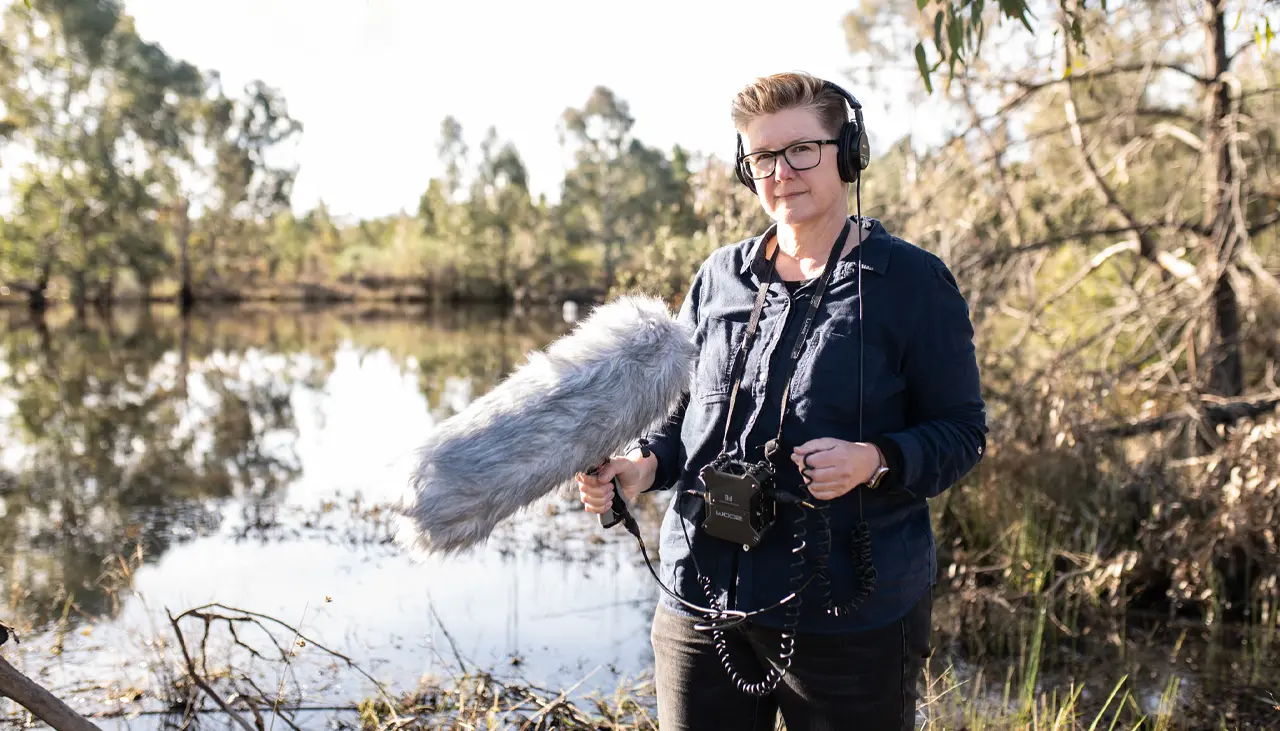Kim V. Goldsmith makes soundscapes featuring everything from worms to people.
Story Amanda Burdon Photo Sally Pittman
A frog choir celebrating rain. Zephyrs through a pine forest. Raucous galahs. Many soundtracks of the Australian bush are familiar, but what of the squirming of earthworms through damp soil or the fizzle of aquatic plants photosynthesising?
Environmental artist Kim V. Goldsmith has heard it all in her bid to capture “the hum of life and death underpinning our natural ecosystems”. “You can even stick a probe into the base of a tree and hear the gurgling sounds of it taking up water and the micro-vibrations as it moves in the wind,” she says animatedly. “I apply a sonic lens so that people might experience familiar environments in unfamiliar ways.”
This creative practice sees Kim collaborating with scientists, farmers, First Nations peoples and community members across regional NSW and around the world. Her rich compositions – audio and video recordings, often accompanied by prose – speak predominantly about climate change, biodiversity loss and land care challenges.
“I am interested in the growing disconnect between humans and their natural environments,” Kim says. “I feel the pressure of the time we are losing in making the necessary changes, in making the right decisions … I see the creation of my works as an opportunity to start conversations.”
Often her art contrasts degraded environments with healthy ones. In the Mosses + Marshes project, Kim and UK-based artist Andrew Howe documented Ramsar-listed wetlands of international importance on opposite sides of the globe. Camping in the Macquarie Marshes in February 2020, Kim initially tuned in to the “unnerving silence” that had descended like a pall following 3 years of drought and bushfires. “It was the scariest thing I’ve ever heard,” she remembers. “There was no wind, no rustling of trees. I couldn’t hear any pigs or roos. The river red gums that were alive were incredibly sick and there were dead roos beneath almost every one of them.”
This story excerpt is from Issue #150
Outback Magazine: Aug/Sep 2023









